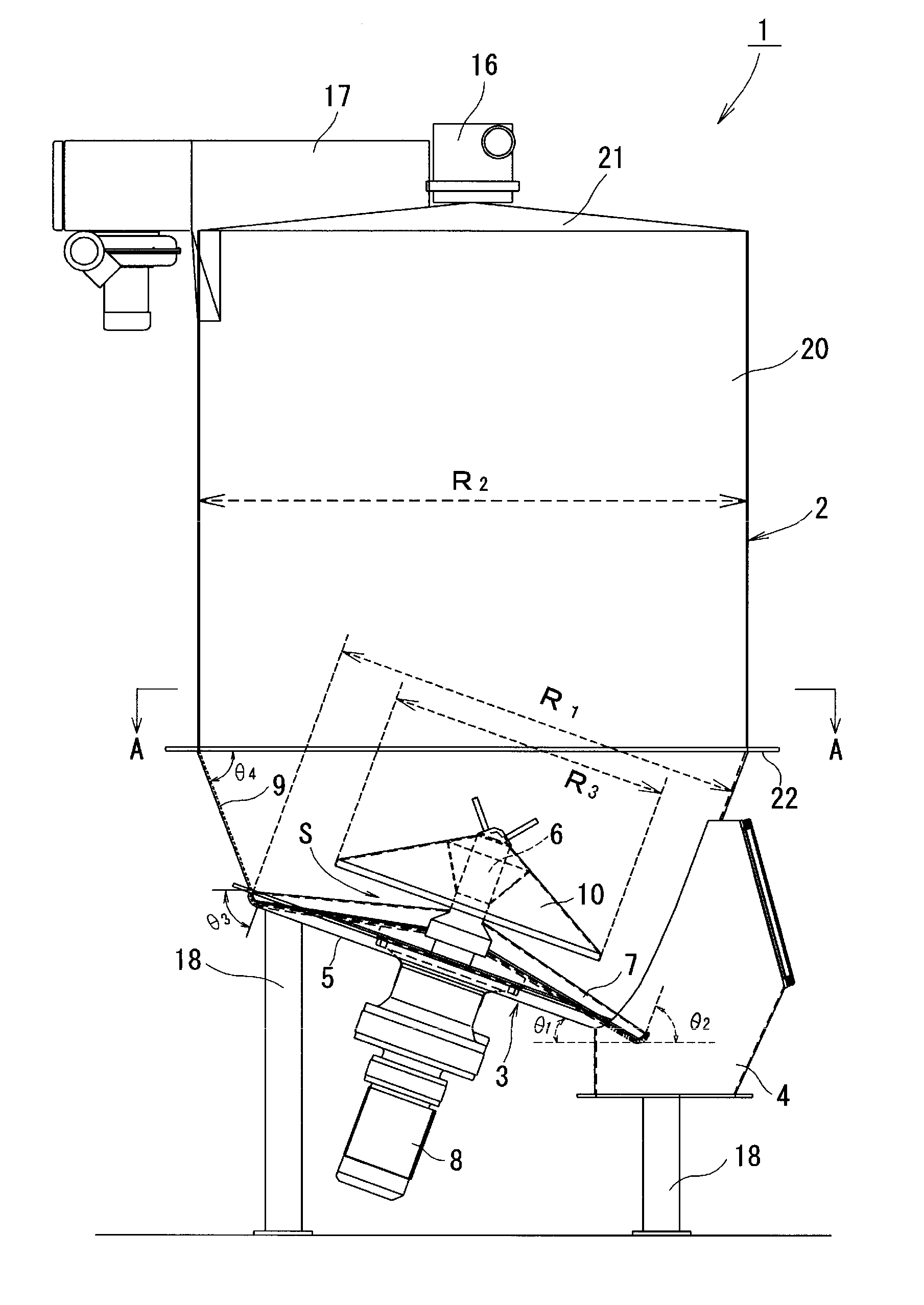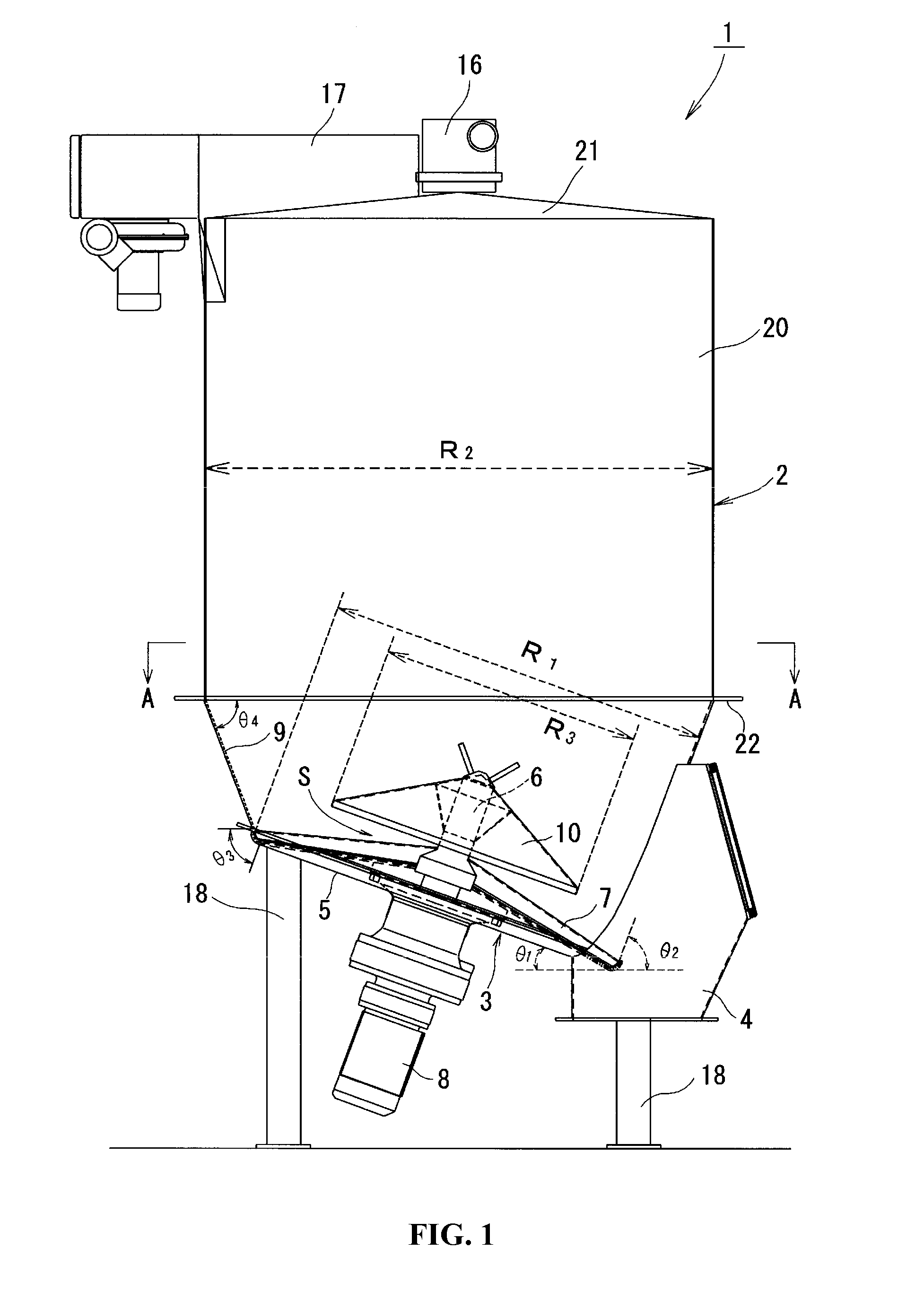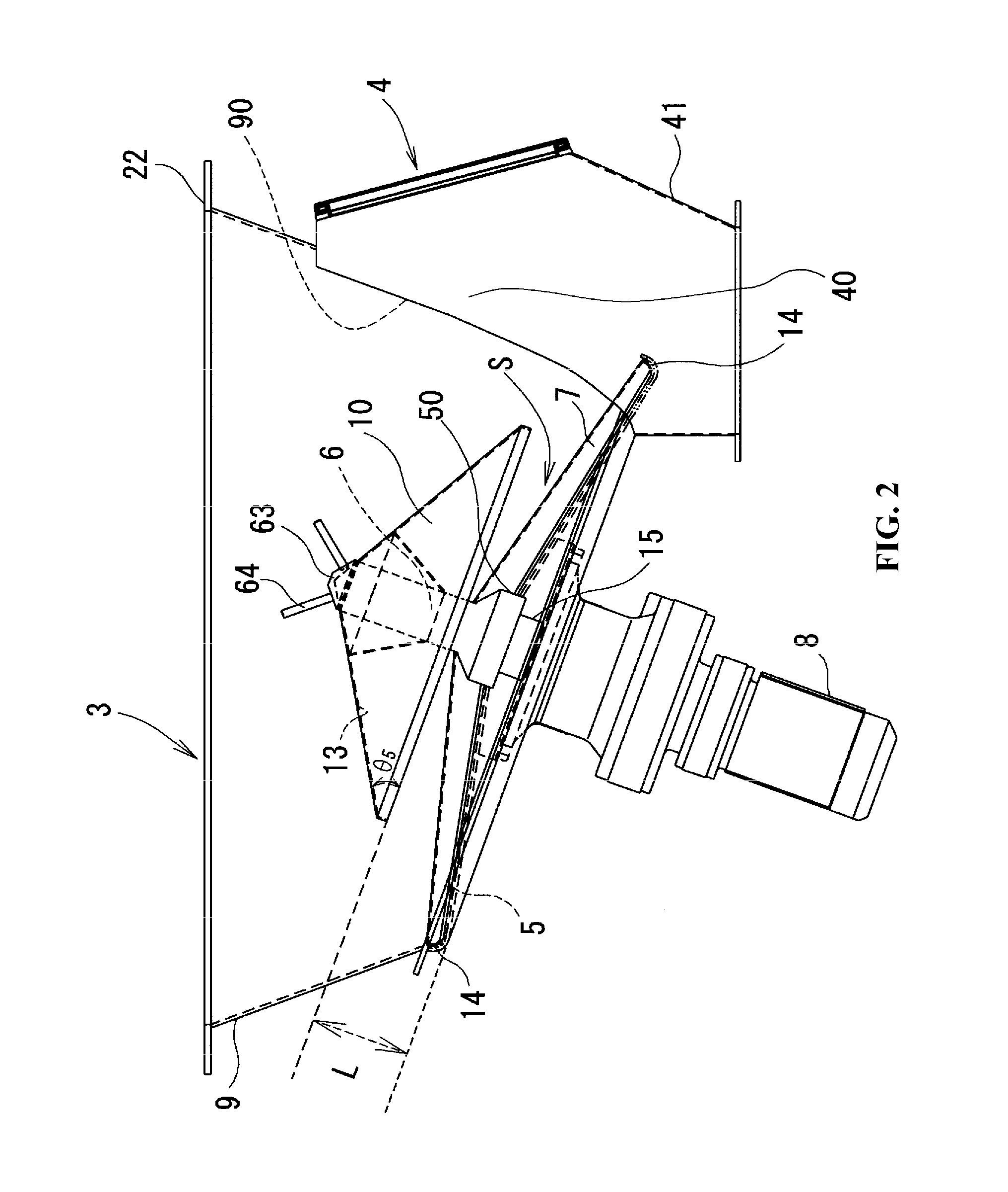Table feeder
a technology for table feeders and feeders, applied in the direction of instruments, movable measuring chambers, volume meters, etc., can solve the problems of overloading the drive device that rotates the rotary vanes, and achieve the effects of low fluidity, low load, and efficient discharg
- Summary
- Abstract
- Description
- Claims
- Application Information
AI Technical Summary
Benefits of technology
Problems solved by technology
Method used
Image
Examples
Embodiment Construction
[0036]A table feeder 1 according to a first embodiment of the invention is described below with reference to the accompanied drawings. As shown in FIGS. 1 through 4, the table feeder 1 includes a bottom assembly 3 of a particulate material processing vessel 2, a discharger 4 formed in the bottom assembly 3 to allow for discharge of a particulate material P (FIG. 4) kept in the particulate material processing vessel 2, a bottom plate 5 provided in the bottom assembly 3, a rotating shaft 6 perpendicularly attached to a main face 5a of the bottom plate 5 to rotate on the center of the bottom plate 5, rotary vanes 7 rotated on the bottom plate 5 by the rotating shaft 6 to discharge the particulate material P kept in the particulate material processing vessel 2 via the discharger 4, and a drive device 8 provided to drive and rotate the rotary vanes 7. The bottom assembly 3 has the bottom plate 5 and a side plate 9 connecting with and surrounding the bottom plate 5.
[0037]A cone 10 having ...
PUM
 Login to View More
Login to View More Abstract
Description
Claims
Application Information
 Login to View More
Login to View More - R&D
- Intellectual Property
- Life Sciences
- Materials
- Tech Scout
- Unparalleled Data Quality
- Higher Quality Content
- 60% Fewer Hallucinations
Browse by: Latest US Patents, China's latest patents, Technical Efficacy Thesaurus, Application Domain, Technology Topic, Popular Technical Reports.
© 2025 PatSnap. All rights reserved.Legal|Privacy policy|Modern Slavery Act Transparency Statement|Sitemap|About US| Contact US: help@patsnap.com



